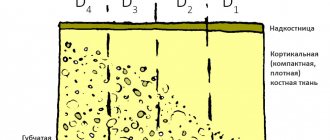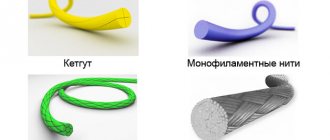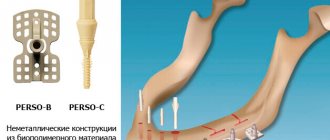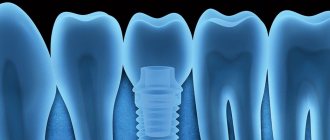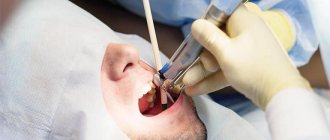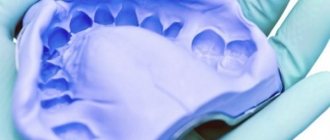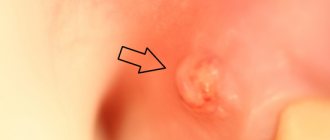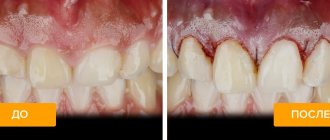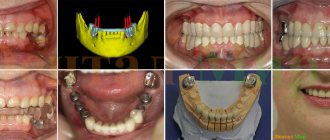Restoring a healthy and beautiful smile with the help of implants for partial or complete edentia is the gold standard in modern dentistry. This method is considered the most reliable, proven and durable. It does not require preparation of adjacent teeth, completely stops bone tissue atrophy, and fully restores all lost functions of the dentition. But what is a dental implant? What types and brands are there? How and in what clinical cases is it used? Read more about this and much more in the material below.
What is a dental implant
double click - edit image
This is a permanent artificial root, which consists of a titanium rod, an abutment (connecting element) and a crown. For its manufacture, biocompatible, durable, inert titanium is used. All types of implants do not cause discomfort or nausea, have minimal contraindications and can be used in a variety of situations:
- Missing 1 tooth - a single implant is installed;
- If 2-4 teeth are missing, a bridge is installed on several implants;
- Complete jaw edentia - All-on-4 (All-on-6) protocols are used
Of all the methods for restoring the integrity of the dentition, implants last the longest. Some manufacturers provide a lifetime guarantee on their products (subject to a high-quality operation and compliance with care rules). The service life of an artificial root is 20-30 years. How long a crown will “live” depends on the material used.
Manufacturers rating
When choosing dental implants, you do not need to rely on the opinions of friends who have had them installed before, or on reviews on the Internet. In the review, a person describes dental implants, types and prices, a few days or weeks after surgery. But how he will behave in a year or three is rarely written about. And patients do not indicate why the doctor recommended specific dental implants, the prices of which are higher or lower than average. Perhaps the person has weak bone tissue, diabetes, or, conversely, is under 30 years of age.
If dental implantation is to be done, prices and reviews should not be the deciding criteria. But it is useful to know the statistics: what dental implants are used by implantologists in Europe. Of the 350 manufacturers, there are 5 clear leaders, accounting for more than 60% of the market:
- Straumann are leaders, accounting for up to 18% of sales in this segment.
- NobelBiocare – slightly behind Straumann, 17% of the market.
- AstraTech - Approximately 15% of the structures used are manufactured by AstraTech.
- 3i Biomet – about 7% of sales.
- Zimmer – approximately 6% of sales.
The prices for dental implants they offer are above average. Another 37% of the market is accounted for by the remaining more than 300 small manufacturers. Some have their own patented inventions that improve the composition, design and performance properties of implants. Israeli manufacturers AlphaBio, MIS and Korean Osstem offer lower cost of dental implants, but good quality.
Implants from different manufacturers can differ greatly in design and materials. Not all of them are widely used in Russia. Look at the overview of the structures used for dental implantation in Moscow, their prices in 2021.
Types of dental implants
They are classified by:
- designs;
- surface type;
- purpose;
- type of fixation;
- materials.
Thanks to this variety, you can choose a design to suit the individual characteristics of the patient. Let's consider these categories.
Two groups of design
- Two-part. Found application in prosthetics with delayed loading. Design of an artificial root of classic length with a removable connecting element (abutment). Implanted when there is sufficient volume of the alveolar process.
- One-piece + mini implants. The peculiarity of this type is its one-piece design with a built-in abutment. Thanks to this, the time for prosthetics is significantly reduced, and all levels of the alveolar process are involved (the implant can be used according to a one-step protocol if there is insufficient bone tissue). Composite-type structures include mini-implants (used to fix removable/fixed dentures).
Three groups by surface type
double click - edit image
- Smooth. There are practically no microbes attached to this type of implant. Indicated for patients with bone/gum inflammation. Reliable fixation in the jawbone is guaranteed by compression/aggressive threading.
- Rough (e.g. TiUltra, SLA, RBM surfaces). They guarantee denser bone growth on the implant and, as a result, excellent fixation.
- With active elements (SLA-active, etc.). The surface is enriched with calcium, fluorine and other materials that have a positive effect on the rate of osseointegration.
Two main purposes of implants
double click - edit image
Three types of fixation
- Basal. As the name suggests, they are implanted into the hardest, densest part of the jawbone. This approach guarantees uniform load distribution, reliable fixation, and also allows implantation without osteoplasty. However, before installing basal implants, you must consult a doctor (there are many contraindications).
double click - edit image
- Zygomatic Used only for implantation of the upper jaw. Unlike classic titanium rods, their length reaches 6 cm. This helps to securely fix them in the zygomatic bone (this part does not undergo atrophy, which means the artificial root will not fall out or move). Carrying out such an operation requires a highly qualified doctor. It is possible to load zygomatic implants with a permanent prosthesis only after 100% osseointegration (3-6 months).
double click - edit image
- Root-like. They are used by doctors more often than other types. Refers to intraosseous structures. Installation is only possible if there is sufficient bone tissue. If necessary, the bone is built up.
double click - edit image
Implant materials
- Roxolid . Advanced development from Straumann. The biocompatible alloy takes root well and withstands increased chewing loads. 85% consists of titanium, the remaining 15% is zirconium dioxide.
- Titanium alloy Grade 4/5 . Grade 4 is an expensive but pure alloy, without impurities. Biocompatible, high survival rate, does not cause allergies. Used in premium segment implants (for example, Nobel Biocare). Grade 5 is a cheaper analogue containing admixtures of aluminum and vanadium. However, it is more durable and suitable for creating basal systems.
- Zirconium dioxide . A universal material from which not only implants are made, but also zirconium crowns (due to their natural whiteness, they are recommended for installation in the “smile zone”). It is considered the most durable metal-free ceramics.
- Tantalum . Biocompatible material, which is the least common (found in Zimmer brand lines).
Indications and contraindications
Bone tissue is formed in girls up to eighteen years old, and in boys up to twenty-one years old. Therefore, the installation of pins during this period is strictly prohibited. There is no upper age limit for the procedure.
In case of blood clotting disorders, as well as regeneration of soft and hard tissues, this surgical intervention can become critical for life. People with an unbalanced psyche or pregnant women are also not allowed to undergo the procedure.
In other cases, nothing limits the patient. However, it should be remembered: this manipulation must be performed by a qualified specialist after a mandatory preliminary examination.
Indications for use are:
- complete or partial loss of supporting elements of the jaw, on which removable dentures can be attached;
- allergic reactions to materials;
- inability to use alternative options for other reasons.
Implantation methods
In general, the implantation procedure occurs in 5 stages:
- Examination, filling out a questionnaire, taking samples, sending for a CT scan.
- Based on the data obtained, the brand, type, number and size of implants suitable for a given clinical case are selected, as well as the method of prosthetics.
- Surgery to implant artificial roots.
- Rehabilitation period (from 2 to 6 months).
- Installation of a permanent fixed crown.
Depending on the specific case, the doctor can carry out implantation in one of two ways: one-stage, two-stage.
- A one-stage protocol with immediate loading involves the installation of a temporary crown on the day of surgery (immediately after implantation) or within a week. The advantage of this method is the rapid restoration of a beautiful smile (especially if we are talking about the front teeth) and maintaining the shape of the gums. There are also disadvantages: a large list of contraindications and conditions that must be met (density, width, height of bone tissue).
- Classic two-stage method with delayed loading. At stage 1, a titanium rod is installed (without a temporary crown). At the second stage (starts only after 3-6 months), the periosteal part of the implant (crown with abutment) is manufactured and installed. This protocol is the most reliable, proven (the likelihood of rejection is minimal), and is suitable for restoring any teeth. Disadvantages: long, not aesthetically pleasing.
Implant brands and prices
All brands are divided into three categories:
- Premium implants - these include world-famous manufacturers: Straumann, Nobel Biocare, Dentsply Sirona (Astra Tech implants). The price of 1 titanium rod is from 49,000 rubles.
double click - edit image
- Business. The list includes the rapidly growing South Korean company Osstem, Biohorizons from the USA, and the German manufacturer Ankylos, Xive. The cost of 1 implant is from 23,500 rubles.
double click - edit image
- Economy This category includes hundreds of medium and small companies from different countries, including Israeli Alpha Bio, Mis, Dif. The price tag for 1 artificial root is set at 18,000 – 21,000 rubles.
The first category is the standard in the world of dentistry (the highest survival rate, the latest technologies, any problem can be solved). Manufacturers provide a lifetime warranty on their products.
Rehabilitation
Often people tolerate surgery easily. The very next day they go to work and return to business as usual.
After the installation of a dental implant, a rehabilitation period begins. It depends on the treatment protocol and ranges from several days to two weeks.
Swelling, pain, and slight bleeding immediately after the procedure are considered normal. To eliminate them, cold compresses on the cheek and anesthetics are recommended. 2-3 days after the installation of a dental implant, bruises appear on the face - a consequence of vascular injury, this is a normal option. To restore tissue, use gels to resolve bruises.
After installation of the prosthesis, you may experience discomfort while eating and talking. The adaptation period lasts 3-4 days. If you have difficulties with diction, train the articulation of sounds using tongue twisters and reading aloud. During training, keep several sugar-free lollipops in your mouth and pronounce each word clearly.
Seeing a doctor after surgery is required if:
- after 2-3 hours bleeding from the gums continues or intensifies;
- on the third day after surgery, the pain did not go away or intensified;
- numbness does not go away and spreads throughout the face;
- on the 2-3rd day severe swelling appeared;
- the temperature jumped sharply, hyperthermia persists for 3-4 days after root implantation;
- sharp pain occurs when pressing on the implant area after a week;
- there was a divergence of the seams;
- after attaching the temporary crown, the teeth do not close together and it is difficult to chew;
- mobility of the prosthesis is noted.
Bottom line: how to choose an implant?
Your doctor will help you choose the most suitable type of dental implants. It’s not easy to understand all the intricacies of hundreds of models on your own.
Even at the preparatory stage, a practicing dental surgeon will conduct a thorough examination, clarify possible health problems, find out contraindications, collect the necessary tests and conduct computer diagnostics. Only after this will he discuss the method of prosthetics and dental implantation with the patient.
In addition, the success of the operation itself largely depends not only on the chosen implantation system, but also on the doctor’s ability to work with one or another type of titanium rods (it is recommended to check the availability of a certificate confirming the surgeon’s qualifications).
- Extraosseous. Implants of this type are attached to the periosteum, in the gum, and not in the deep layers of the alveolar process. They are divided into three groups: intramucosal, subperiosteal and stabilizing. The first are attached in the deep layer of the gum, the second - in the periosteum, the third - on the undestroyed tooth root. Extraosseous structures are used as a temporary solution before implantation.
- Intraosseous. There are models with a one-piece and collapsible design. They are considered a universal option, as they are suitable for classic two-stage and one-stage implantation. Dentists note that they are quickly and easily implanted into the bone, take root well, and rarely cause complications.
Basic terms
- A dental implant is a structure that is installed into the jaw bone during surgery and replaces the roots of the teeth, and also serves as a support for prosthetics;
- An abutment is a supragingival structure that imitates a tooth stump. It can be integral with the implant (non-separable design) or as a separate structure (demountable design);
- The healing abutment is a supragingival intermediate structure. Essential for creating a beautiful natural gum margin. (in the case where the abutment and implant are a single whole, not used);
- Osseointegration is a direct structural and functional connection between living bone tissue and the surface of the implant implanted into it.
Recommendations after surgery
In the postoperative period, the patient must follow the doctor’s recommendations:
- You should not eat food for three hours after the procedure. Then warm soup or yogurt, soft cottage cheese, and mashed boiled vegetables are recommended.
- For the first three days, too cold or hot food is recommended. The diet must be expanded gradually. Hard foods create stress when chewing and should be temporarily avoided.
- While eating, try to minimize the mechanical impact on the wound area, give up the habit of chewing a pencil.
- Replace coffee and black tea with herbal or fruit compote.
- Avoid smoking, alcohol, and heavy physical activity.
- The diet should include a sufficient amount of fluid and foods rich in calcium, vitamins P and C.
- To reduce swelling, use cold compresses on the cheek or ice, wrapped in a towel.
- Painkillers prescribed by your doctor will help eliminate the discomfort.
What to do to prevent rejection:
To prevent peri-implantitis, take proper care of your oral cavity and take antibiotics for seven days. Do not touch the seam area with your hands or tongue! For up to 3-4 days after the procedure, you need to make oral baths with an antiseptic solution. When the swelling decreases, it is recommended to rinse your mouth gently. Start brushing your teeth no earlier than the fifth day after surgery. Use the paste to prevent gum inflammation. Please note: it is better to use a new brush with soft bristles!
During the rehabilitation period, avoid sports training, sauna visits, overheating and hypothermia, and air travel. If the procedure was performed using a sinus lift, you should cough and sneeze with caution. You can’t puff out your cheeks too much or open your mouth wide.
